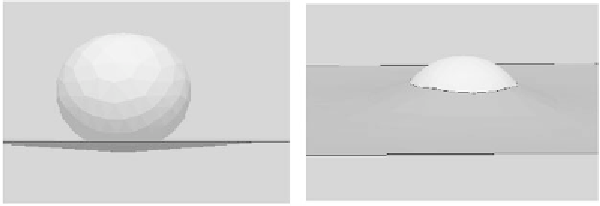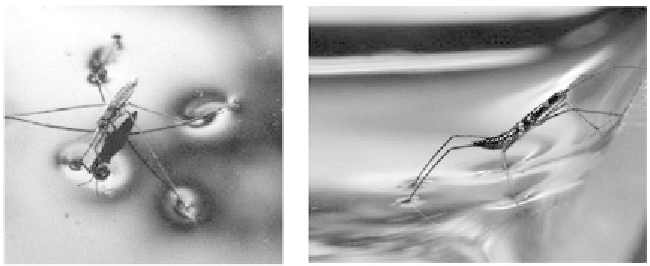Biomedical Engineering Reference
In-Depth Information
Figure 3.27
Numerical simulations of different positions of a droplet (1 mm) on a liquid surface
depending on the three surface tensions. (a) The surface tension of the droplet is very large. (b) The
surface tension of the droplet with the other liquid has been reduced; the drop is at equilibrium due
to the balance of buoyancy and surface tensions.
3.6 Capillary Force and Force on a Triple Line
3.6.1 Introduction
Capillary forces are extremely important at a microscale. We have all seen insects
“walking” on the surface of a water pond (Figure 3.28). Their hydrophobic legs do
not penetrate the water surface and their weight is balanced by the surface tension
force. More than that, it is observed that some insects can walk up a meniscus (i.e.,
can walk on a locally inclined water surface). The explanation of this phenomenon
was recently given by Hu et al. [16] and refers to a complex interface deformation
under capillary forces.
In the domain of microfluidics, capillary forces are predominant; some exam-
ples of the action of capillary forces are given in the following sections.
3.6.2 Capillary Force Between Two Parallel Plates
A liquid film placed between two parallel plates makes the plates very adhesive. For
instance, when using a microscope to observe objects in a small volume of liquid
deposited on a plate and maintained by a secondary glass plate, it is very difficult to
Figure 3.28
(a) Capillary forces make the water surface resist the weight of an insect. (b) An insect
walking up a meniscus. (
From:
[16]. Courtesy of David Hu.)



